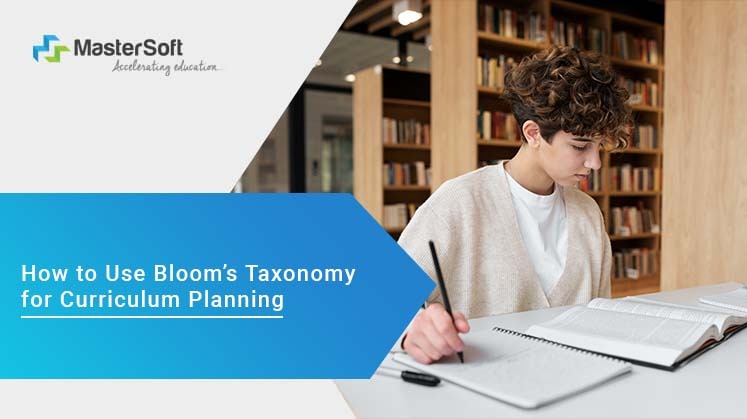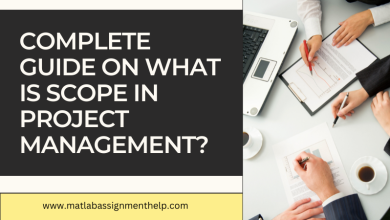
How to Use Bloom’s Taxonomy for Curriculum Planning
Teachers and educators alike have always strived to offer the best learning experiences to students. Hence, they often look for ways to help them acquire tools and strategies that would be instrumental in achieving their goals. Bloom’s Taxonomy is one such strategy that provides a structure to classify and organize educational purposes and performance into specific and hierarchical categories.
It is a framework that is designed to encourage higher-order thinking skills amongst students by empowering their cognitive skills starting from the lower level. Furthermore, the classes are planned in such a way that incorporates exercises and best practices to target knowledge, skills, or attitude for change. The methodologies employed by teachers mainly aim to increase knowledge that comes under the cognitive domain, develop skills that come under the psychomotor domain, and develop emotional aptitude or balance that comes under the affective domain.
The taxonomy provides a foundation for developing sub-goals and assessment methodologies that, in the long run, helps to achieve the goals. Moreover, the learning outcomes established in sync with the curriculum provide a direction for education. At the same time, the framework enables the instructors and educators with insight into students’ cognitive development. It also acts as a guiding framework that helps the teachers to work through different criteria of curriculum, making it easy enough to include in day-to-day lesson plans.
Bloom’s Taxonomy was first published in 1956 but still has remained prominent amongst the K-12 teachers over the years. As a framework, it has proven to be helpful to map the curriculum, plan lessons, deliver assignments, and assess student learning from basic to complex.
What are the six levels of knowledge in Bloom’s Taxonomy?
Remember
The first level of the structure indicates the student’s ability to recognize and recall basic facts, concepts, processes, patterns, structures, and settings. To utilize this level effectively, teachers can ask students to recite a poem, recall geometric formulas or list out countries from a particular continent.
Understand
This level relates to the student’s ability to decode the meaning and significance behind concepts, facts, and ideas. Simultaneously, it also indicates their aptitude to communicate the same to their teachers and others. At this level, students can summarize the main ideas of a story or event and classify different animals.
Apply
This level relates to the student’s ability to use knowledge or skills that they have developed in new contexts and situations. At this level, students can be expected to create a budget using mathematical concepts or write a descriptive essay explaining a character or event using a particular artistic style.
Analyze
At this level, students can break down complex concepts into different parts and identify their connections. For example, at this level, students might be able to distinguish between fact and opinion in a newspaper article. They also can explain how a machine works or identify logical fallacies in an argument.
Evaluate
At the evaluation level, students can make judgments about the value of ideas, items, materials and state their opinion about any particular thing. At this stage, they have viable knowledge to make any landmark decision about their lives and careers.
Create
This stage relates to students putting together different elements to form a coherent or functional whole. They can reorganize elements into new patterns or structures through generating, planning, or producing.
How to incorporate Bloom’s Taxonomy into curriculum planning?
Content planning
While developing content in sync with the curriculum, instructors must include content moving from foundational to higher-level thinking. Instead of filling the content makeup with unnecessary details, they must focus on the key concept, facts, and relevant events.
Identify the knowledge gap
It is extremely important for the instructors to identify where the students are in terms of their learning journey and where they need to be at the end of a particular lesson. Figuring out the level of understanding of the students will help to chalk out a plan for students’ respective learning journeys.
Simultaneously it will also help to identify which kinds of books, learning activities, and assessments will be useful to both teachers and students.
Appropriate assessments
Employing effective assessment methods is instrumental for gauging student learning; moreover, it also helps to indicate the level of students’ understanding. For instance, teachers can use multiple-choice questions(MCQs) at the Understand level of the taxonomy.
Including varied activities
Teachers can use various activities such as open discussions, role-plays, question and answer sessions, debates. Planning these in-class activities can help students to develop their knowledge and mastery over a particular topic.
It is noteworthy to mention that the activities can also be carried out online through a learning management system. Moreover, while moving progressively from one level to another teachers can continue to include varied learning activities.
Essential questions
As a part of the daily class, teachers can ask questions towards the end of the class; to check if the students have reached class objectives. The activity will help to get a clear picture of students who are progressing towards the objectives and those who are failing to do so.



